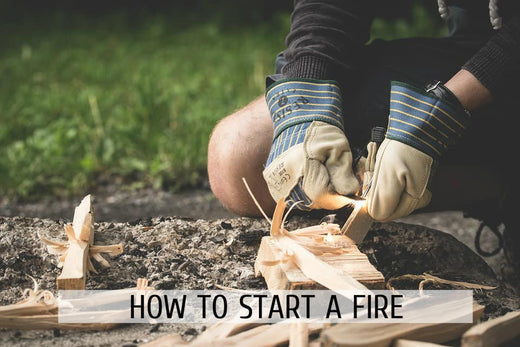Fire is essential in our lives, and its control was one of the earliest human discoveries.
We need it to warm our bodies, especially during cold days. It gives us light, enables us to cook our food, and keeps us safe from danger.
The fire has been around for millions of years.
The discovery of the controlled use of fire was started by Homo erectus during the early stone age, around 0.2 to 1.7 million years ago.
Archaeologists discovered evidence of the controlled use of fire in Lake Turkana, Kenya, and Wonderwerk Cave, South Africa.
Let us now discuss below the benefits of fire during ancient times:
Benefits of Fire in the Ancient Times
Hominids benefited greatly from the discovery of fire.
It helped them survive cold nights and expand to different places with various climates. It also helped them live in caves, sleep on the ground, and protect their terrain.
The fire also allowed the hominids to ward off dangerous animals lurking at them at night as they slept.
The discovery of fire also led hominids to cook and eat meat. They could create tools such as spears for hunting and cutting meat for food by using fire.
They also burn the grasses to hunt for animals instead of going after them in the wild.
In addition, they discovered that they could dry and preserve meat for future consumption using a fire. This method also protected the hominids from the dangers associated with eating raw meat.
They understood how to build big fires that could clear the field and make it fertile. They have learned to plant crops apart from hunting for meat.
Meanwhile, they have started to learn to create art using fire. They built statues and pots made of ivory, clay, and stone.
Statues were used for worship, while pots were used for cooking. These practices led to a unique form of interaction within the community, uniting people of all ages to discuss matters in the Hearth.
The level of communication developed and the community's relationship with each other. They learn to divide things in the community, such as hunting, gathering wood for fuel, and building a fire.
Those who know how to build a fire are considered the most powerful person in the community.
How to Start a Fire in the Wild
The benefits mentioned above were some of the benefits of fire in ancient times, and of course, they are still relevant today.
We need fire to accomplish things inside our homes, factories, and even in the wild.
We need fire whenever we go out for adventures, especially at night.
Every man should know how to start a fire without matches. This is an essential survival skill. You can never guess when and where to build a fire, especially outdoors.
You might get lost in the forest and need to remember your things. Your matches might get wet, or it might be exceedingly windy. In these cases, your matches or lighters could be more useful.
Here are some of the techniques to try to start a fire:
Fire from friction (wood, sticks, and tinder nest)

This method is the most difficult. It involves many techniques, such as hand drills, Fire Ploughs, flint and steel, and bow drills.
You need good wood, determination, and strong hands in a hand drill and Fire Plow.
You must create a nest from dry grass, bark, or leaves.
Next, you need to cut a V-shape notch on the fireboard and bark to catch the ember produced from spinning the spindle. The spindle is the stick that creates friction by spinning at the fireboard.
Then, you will start spinning on the fireboard, produce heat from friction, and wait for embers to appear. When it appears, blow it gently to create a fire.
Choosing the wood and spindle is crucial in these methods. The recommended types of wood and spindles are cedar, cottonwood, walnut, cypress, and aspen. The wood and spindle must also be dry.
Meanwhile, you will need a board, bow, socket, drill, and cord for the bow drill technique. The socket will pressure the spindle as you spin it on the bow and the board.
You can use a rock or wood as a socket in this technique. The cord can be anything you have, like a shoelace.
Meanwhile, the bow can be made of wood with a slight curve. Start sawing the bow back and forth. It will create friction between the spindle and the board.
Embers will appear on the board and blow it gently until it creates a flame. Transfer the embers to dry leaves or tinder nests after that.
Fire from rocks and steel

Other materials are flint and steel instead of wood, sticks, and dry leaves. If you don't have these things with you, you can always improvise.
You can use the steel blade of your pocket knife, quartzite, birch, char cloth, or fungus. Something in your backpack will always resemble a flint, stone, or steel.
Rub the steel with the char cloth or birch when you have gathered these materials. The steel will produce sparks, which will cause the birch or char cloth to glow.
Hold the fabric on the tinder nest and blow it gently to start a flame. This is a primitive method of starting a fire.
This is still very useful and applicable, especially in the wild.
Fire from lens
Using a lens also makes it easy to make fire without a match.
Any boy who knows how to melt green plastic army men knows how to do this. However, this method will work only when the sun is up.
You can't use this method to light a fire at night, but you only need a magnifying glass.
You can use a magnifying lens, binocular lens, or eyeglasses to create a fire.
Adding water to the lenses can intensify the beam.
The first thing to do is to put the lens toward the sun's heat.
Next, put the tinder nest, dry leaves, or wool under this spot, and you will see that the lens will start to create a fire.
Fire From Unconventional Materials
Balloons, Condoms, and Plastic

If you don't have a magnifying glass, you can still build a fire using balloons or condoms. These materials have shorter focal lengths than magnifying glasses.
To do this, inflate and fill the balloon or condom with water and tie it at the end.
Then, squeeze it to create a shape with a circle of light. Squeezing it will create two small lenses in the middle.
Ensure you inflate it evenly, and just ensure the size is right.
You can also create a fire using a water bottle or plastic with water and a piece of paper with dark prints.
To do this, fill the water bottle with water. Make sure that the water is crystal clear.
Then, place it in the sunlight and ensure it strikes the water, just as you would with magnifying glasses.
A circle will form if you put the paper with a dark print underneath the water bottle.
Add more layers of paper until the paper forms an ember. Blow it gently, and it will gradually produce a fire.
Tin can
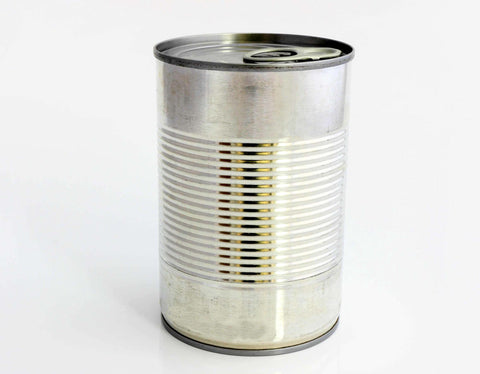
Another method is to use a tin can, chocolate, and toothpaste.
Polish the bottom of the tin can with chocolate or toothpaste, and it will shine like a parabolic mirror.
As soon as the sun's rays strike the tin can, it becomes a focal point. This will then form a flame on your nest.
Steel wool, gum wrappers, and batteries
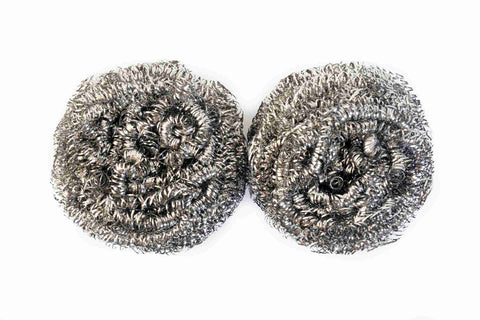
You can make a fire by chance if you have steel wool, gum wrappers, and batteries in the wild.
Rub the battery on the steel wool or gum wrapper; the friction will cause the wool to spark and glow. Blow it gently until it produces flames.
Transfer the embers created at the wool in the nest of leaves.
Flashlight
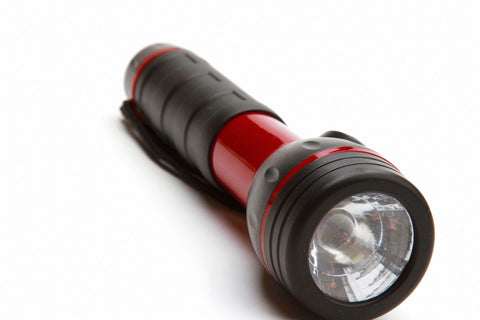
A flashlight can also be used to build a fire.
Remove the cap of the flashlight and take the silver cup from it.
Place the silver cup directly from the sunlight and put dry leaves, tinder nests, or other light materials beneath it.
Embers will start to appear and blow it gently.
Empty lighter
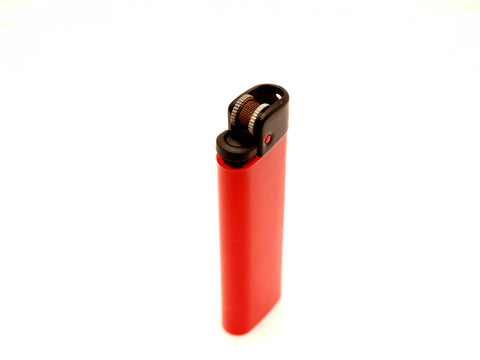
You can still use an empty lighter to build a fire.
To do this, slowly grind the lighter's wheel on paper for about 2 minutes.
The friction will create embers on it.
Put dry leaves or tinder nests underneath until you see flames building gradually.
Fire from ice

Contrary to common belief, building some flames is possible even in wintertime.
You can do this by using a piece of crystal-clear ice. You can also create ice by putting water in a plastic bag and putting it in a cold environment.
Next, the ice is formed into a lens or sphere shape. Make sure it is thick in the middle and narrow at the edges, like a magnifying lens.
Use your hands to form this, and be careful not to break it since the ice is vulnerable.
Then, angle the lens created from ice toward the sun just like how you do it using ordinary lenses.
Focus the light on the nest or dry leaves, and you will create embers.
Blow it gently until you create flames.
Tips on building fire
In addition to the techniques mentioned above and the materials to be used, follow these tips to successfully build a fire in the wild.
During winter
Building a fire during winter is possible if you choose the right spot correctly.
If you wish to create it under the tree, check that the ground has minimal snow, and be aware that the snow on the branches might fall on your place.
You can also build a platform made of dry wood or stone.
When you are outdoors and want to start a fire, even if it is snowing, ensure you always have a stack of wood, dry leaves, a tinder nest, and other dry materials for fuel. It is best to keep the flame burning.
That's why you will need huge chunks of wood to survive.
Over time, the wood will turn into charcoal, which will be helpful for your survival. It would also be best if your place were near the fire.
When raining
When it's raining, building a fire is still doable.
First, pick the right spot. If you are in the wild with no shelter from the heavy rains, you can stay in the cave, under the big tree, beneath the big boulders, or set up a tarp between two trees.
Collect dry leaves, stones, sticks, or wood with you.
Ensure you have enough materials to last on your entire journey.
Lastly, always see that the fire will not get wet from the rain.
Protect it by putting a cover above, such as a tarp, plastic, or branch from the big tree.
Safety Tips
1. Never leave before putting out the fire.
Fire may not appear threatening at first, especially when under control, but it can potentially turn terrible and ruin millions of homes and human lives.
Putting off the fire before leaving is always the first rule.
Before adding more water, sprinkle water on the fire and cover it with moist dirt.
You need to prove there isn't even a piece of burning wood left that could spark a wildfire after you leave by holding the damp ashes in your hand.
You want to be someone other than the one who starts one of the many fires reported worldwide due to human error.
2. Never make use of rocks from riverbeds.
The water in the wet rocks from the riverbeds will expand when heated.
When the water swells and breaks them apart, these rocks could explode on your face and cause significant injury.
The water inside the rocks boils and expands, shattering into tiny fragments.
When using rocks to build a foundation, there is some basic science that you should be aware of—science that you most likely learned in high school.
3. Build a fire away from branches and high slopes.
To reduce the likelihood of the fire spreading, build it far from overhanging branches, decaying roots, dry grass, leaves, logs, and steep places.
Even the additional wood you saved needs to be stored far from the fire.
4. Never Leave a campfire unattended.
The slightest breeze can disperse and ignite a wildfire, so preparing everything before lighting the fire is important.
Putting Out a Fire
A fire can be put out in several ways, such as by removing the fuel and the oxygen or reducing the temperature. To put out a fire, outside are:

-
Different extinguishing techniques are needed for various types of flames. A grease fire could need a dry chemical fire extinguisher, whereas a grass fire might be put out with water.
-
To prevent the fire from spreading, eliminate any nearby fuel sources, such as flammable materials like leaves and branches.
-
Eliminating the oxygen supply, which the fire needs to burn, can help put it out. A blanket, tarp, or other non-flammable material can be draped over the fire.
-
If the fuel is humid or wet and the fire is small, you can put it out using water. Add water to the fire as soon as you add it, and continue adding water until the fire is entirely put out.
-
Without water, you can put out the fire with sand or soil. Ensure that all the embers and hot places are caught before covering the fire entirely with a thick layer of earth or sand.
When putting out a fire, caution must be used because unattended fires can become dangerous.
If the fire is too big or out of control, do not attempt to put it out yourself. Instead, call for assistance and leave the area as soon as possible.
Conclusion
In sum, building a fire is one of the essential knowledge that we all must know today. It will help you survive in the wild during catastrophes and emergencies.
We will never know what will become of us, so we must always be prepared.
There are various products available now that can help us build a fire.
Although these products are reliable, we may not have them.
Thus, the best way to survive is to acquire the skill of building a fire without any matches or lighters and memorize it by heart.
The techniques mentioned above are proven and tested by many people.
Flint, sticks, and stones were used by our forefathers millions of years ago, and they still apply today.
Orienting ourselves to these methods and sharing them with our friends and family will be best.

